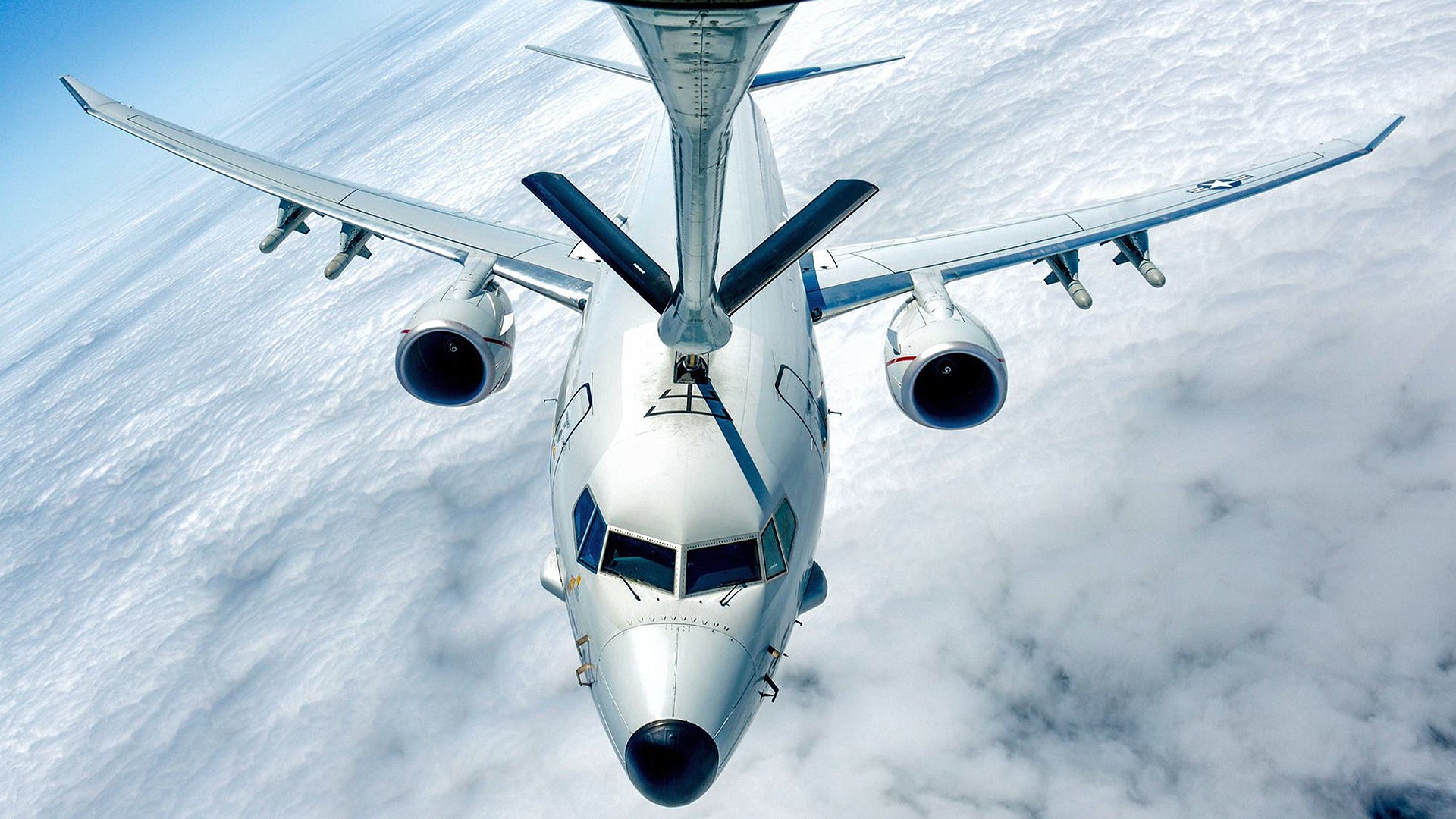The P-8’s short career with the US Navy has been an outstanding one. The much doubted weaponized 737 has become one of the most in-demand assets in the Pentagon’s portfolio. It has made major news by rescuing castaways, searching for MH370, monitoring China’s man-made islands in the South China Sea, and even being threatened by Iranian air defenses. Four years after its introduction into service, it continues to evolve rapidly in exciting new ways, and the jet has become one of the America’s most successful new defense exports.
The last time we talked P-8s with a maritime patrol pilot, the jet was still very much an unknown commodity, with just a handful of squadrons having their hands on it. At that time, the nature of the P-8 future mission profile was very much up for debate. Now The War Zone has connected with one of Patrol Squadron Five‘s, better known as the VP-5 the “Mad Foxes,” pilots to chat about how the storied unit has continued to break down new barriers with their still quite fresh P-8 Poseidons.
What can the P-8A Poseidon do better than the aircraft it replaces, the P-3C Orion?
The P-8 Poseidon has a significant leg up on the P-3 Orion when it comes to the airframe itself, crew coordination, and its ability to handle future capabilities. With both forward and aft auxiliary fuel tanks, we can load up with about 70,000 pounds of gas depending on our takeoff limitations. I have flown 10.5+ hour ISR (information, surveillance and reconnaissance) missions, with a comfortable amount of gas to land with.
By being able to fly higher, faster, and longer than the P-3, we can get on station faster than our predecessor. This also gives us the capability to easily cross the pond, and allows us to be a fairly mobile force if time and mission dictates us to have to pick up and take the plane wherever we need to go. This was also seen recently in the Clyde Challenger rescue in the Atlantic Ocean, where VP-45’s P-8s had to fly over 1500 miles just to get on station.

Secondly, as seen in a recent Boeing article, such a key aspect of passive sonar detection of enemy submarines is based on the ability of the acoustic operators to detect a contact on their grams. Arriving on station in a smoother platform, allows for a better rested crew, resulting in a more alert operator and a higher probability of detection.
Based on decades of 737 experience, the P-8 is also more reliable than their P-3 counterparts. The first P-8 I had ever flown in VP-30 had arrived from Boeing the week prior and had less than 30 hours on the whole airframe, and yeah, it did have that new plane smell.
All of this being said, the P-3 and EP-3 still provide an invaluable service via the LSRS pod, and ELINT/SIGINT (electronic intelligence/signals intelligence) capabilities that have not yet come online for the P-8. VP-5 will be the first squadron to receive the new AAS pod following our next deployment.
The P-8 has had no problems handling low altitude ASW (anti submarine warfare) and ISR collection. The HUD in the left seat also greatly increases our situational awareness when operating at 200 feet and up to 45 degrees angle of bank. Also, the P-8 can monitor more sonobuoys than the P-3 and the integration of a single rail setup for the operators helps crew communication and crew resource management. By having the TACCO sit next to the COTAC, next to the EWO’s, it is easier to have everyone on the same page.

Any fighter jet or helicopter pilots need not read the next paragraph!: One of the biggest yet very superficial early gripes with the new platform was the coffee maker was never hooked up, and the head is located right next to the two “lay flat” seats that are used for crew rest. With missions sometimes briefing off at 2am, and lasting until 8pm the following evening, coffee is a mission essential item. I had my fiancé send out a Nespresso machine that we hooked up and soon we were brewing up some mean espressos at 39,000 ft over the Gulf of Oman. As if maritime pilots weren’t already known for being Gucci prima donnas, the looks I got from the Marine jet pilots as I stepped to the plane lugging my espresso machine were pretty priceless!
Can you give us a tour of the P-8’s sensors and what they bring to the table when it comes to executing real world missions?
The P-8 currently has a host of sensors for use during ASW, ASuW (anti-surface warfare) ISR, and SAR (search and rescue) missions. Our APY-10 radar can be used for SAR (synthetic aperture radar), ISAR (inverse synthetic aperture radar), WX (weather), and periscope detection modes. SAR is used to provide long distance imagery of ports, cities, runways, etc. SAR imagery can help identify targets at distances far outside standoffs. ISAR provides a two-dimensional image of ships that can be used to help identify vessels at long distance and used for target classification. ISAR can also be used to determine ship length and overall mast structure.
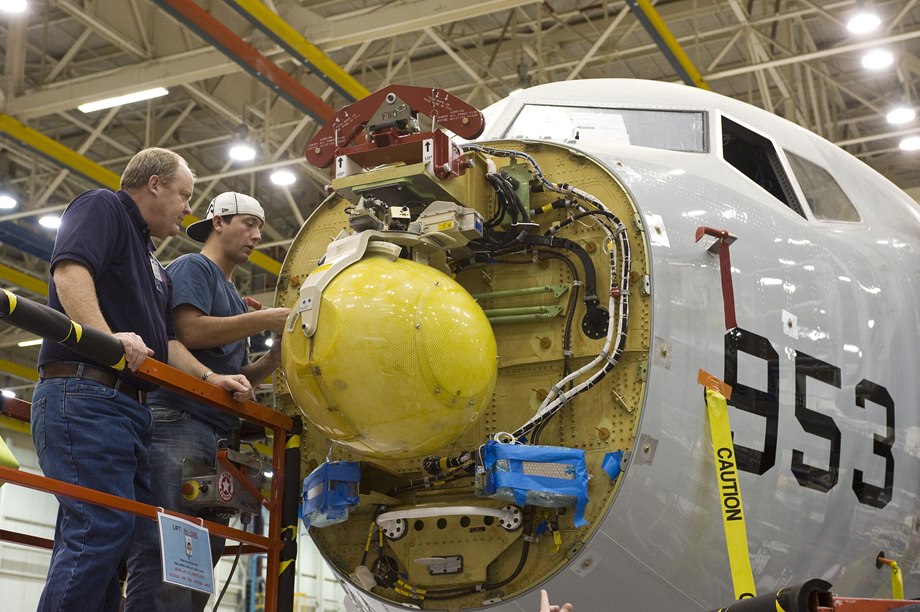
The EO/IR (electro-optical/infrared) camera can be used to visually identify both land and sea based targets, with the IR camera having both white hot and black hot images. IR can help to detect thermal scarring from submarines, fires during a search and rescue mission (as used on the fishermen rescue in the Pacific), and other useful target characteristics.
ESM (electronic surveillance measures) is used to collect a wide range of emitters used by both commercial and military ship radars, aircraft, and land based facilities at extended ranges. It allows us to be able to geolocate emitters to find a foreign submarine, surface combatant, or land based surface-to-air site. It is also a passive system, which allows us to covertly monitor a wide area.
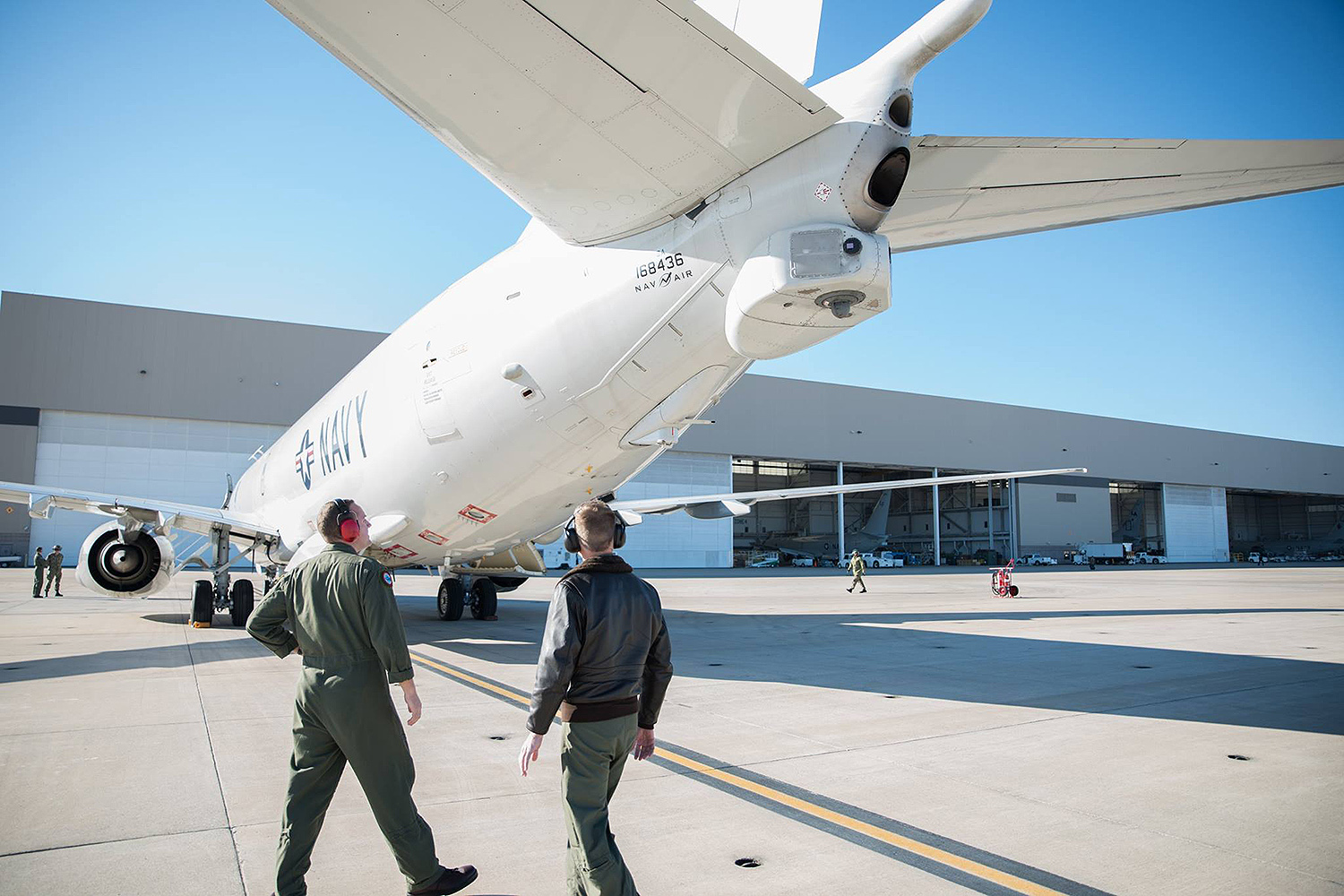
DIRCM/GPTA (directional infrared countermeasures/guardian pointer tracker assembly) is our primary defense against surface-to-air missiles, which engages surface to air missiles with a laser to confuse the seeker on the missile. We also have four buckets of 30 flares apiece to also help defeat surface-to-air missiles threats. The P-8 is also equipped with a dry bay fire system. With sensors located throughout the aircraft, the system detects any sort of flames or explosions from small arms or other projectiles that damages the aircraft and immediately extinguishes it.
Your squadron deployed the P-8 operationally to the Middle East for the first time recently. What was the deployment like and how did the P-8 perform in the harsh desert environment?
The first P-8 deployment to the 5th Fleet AOR was definitely a trial run for the platform. The P-8 flew missions in the Arabian Gulf, Strait of Hormuz, Gulf of Aden, Gulf of Oman, and the Red Sea. Before the P-8 arrived, these areas were often split up into several different missions for different aircraft during the course of one day. It was actually a suggestion from a junior officer Naval Flight Officer who simply asked “why can’t we just do it all in one flight?”
With the endurance and speed of the P-8, a single mission could cover the entire NAG, CAG, SAG, SOH,GOO,GOA, and BAM strait before returning home. The P-8 was also able to use several different airfields around the AOR as refueling points as the mission dictated. The inaugural 5th fleet deployment was also watched closely by our non-allied nations as well.
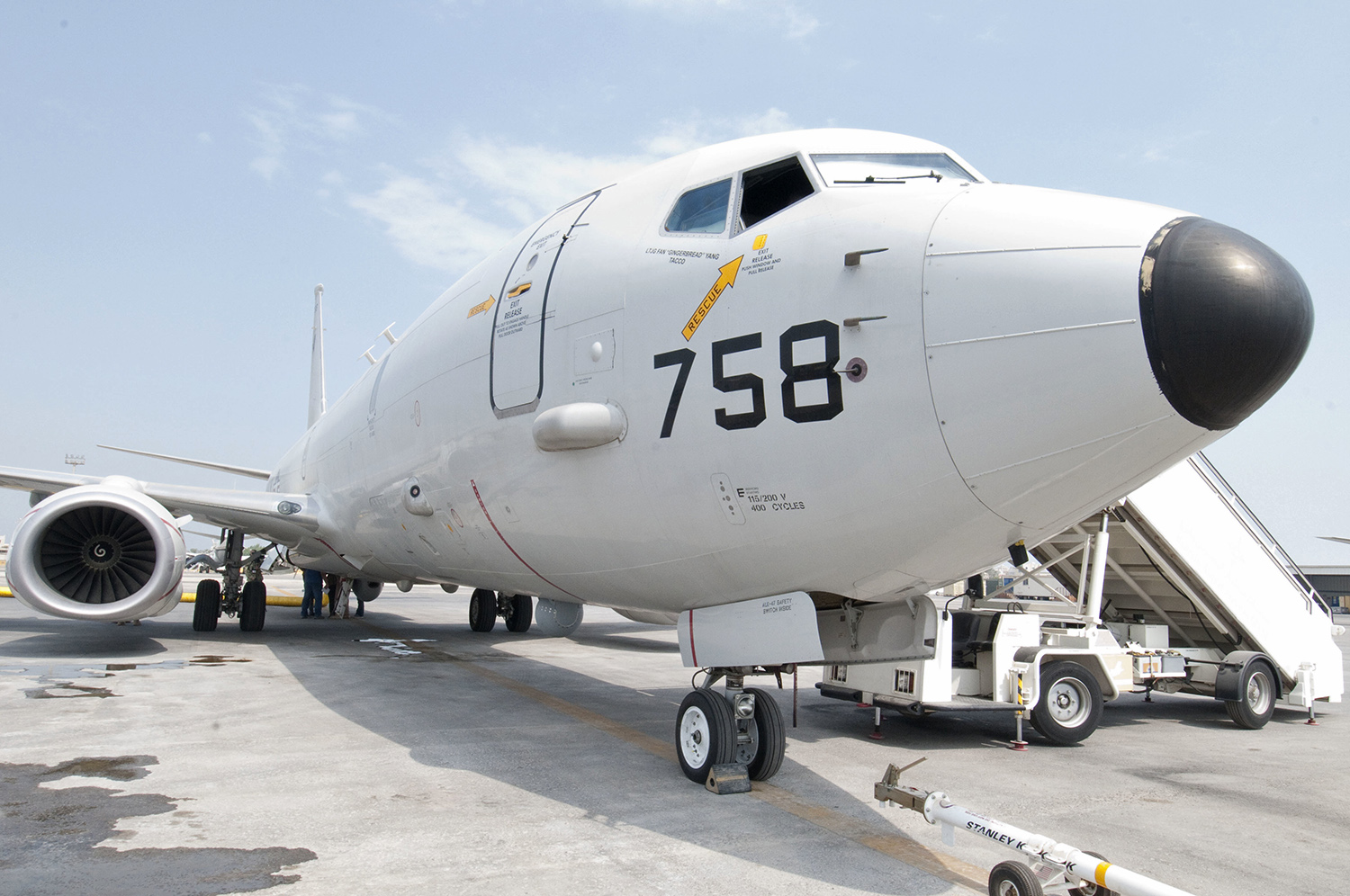
The biggest challenge our maintenance team faced was keeping the planes clean from the constant sand and dust blowing into the aircraft’s engines and equipment bays. Despite this, we still had over a 95% on time take off (OTTO) rate. Secondly, it can be incredibly difficult to keep an aluminum tube running literally tons of electronic equipment cool enough in 120+ degree heat. If the systems reach 100 degrees internally, we have to shut down the mission systems to protect the circuits. Eventually, through some MacGyver type work from the maintenance team and Boeing, we stuffed an external air cart connector through a sonobuoy free fall chute, which dumped cold air through the aircraft, and we never suffered a mission shutdown after that.
Secondly, from a pilots perspective, the aircraft performance aspect was often a limiting factor on takeoff and landing. The hot and humid air of the 5th fleet AOR made max gross weight takeoffs much more difficult than we normally experience while training stateside. Through a combination of speed increases, full 27,000 pound thrust, bleed air off takeoffs, we were able to take along enough fuel to execute each mission.
The P-8 can execute a ton of different mission sets, what were the main ones that you were called on to provide while in the 5th Fleet AOR?
Given how congested the waters are in the 5th Fleet AOR, there can be thousands of unidentified small fishing, merchant, and other vessels. Through a combined use of our radar, ISAR, and camera, the P-8 can transit the entire AOR, updating thousands of contacts through Link 11 and Link 16. The area of operation also contains some very popular smuggling routes for narcotic, weapons, and human smuggling. We would often provide overwatch for VBSS (visit, board, search and seizure) teams during boardings of suspected dhows for illicit cargo, often resulting in the successful interdiction of weapons, drugs, and human trafficking.

The P-8 also provided overwatch during US or allied ship transits through maritime choke points (or sea lines of communication) in order to provide the consistent and real time situational awareness required to deconflict any potential maritime interactions that might impede the safety of the maritime environment. We also participated in operations in support of Operation Inherent Resolve, providing support to coalition vessels operating in the vicinity of the Bab al Mandeb Straits.
How do the busy and tense littoral waters found in the Middle East, especially in the Persian Gulf and Red Sea, complicate submarine hunting?
In the congested and relatively shallow waters in the Middle East, there is a significant amount of ambient noise, which makes the passive tracking of submarines more difficult. With thousands of small fishing vessels as well, it could be easy to miss a periscope on radar amongst hundreds of contacts.
The Arabian Gulf plays host for a few different flavors of submarine search. There are some nations who are very competent in their submarine tactics, and others who are still progressing through the early stages of quieting and tactics. The Arabian Gulf does play host to a variety of out of area-deployers that we were active in tracking, which also helped to maintain crew currency before transitioning to 7th fleet AOR.
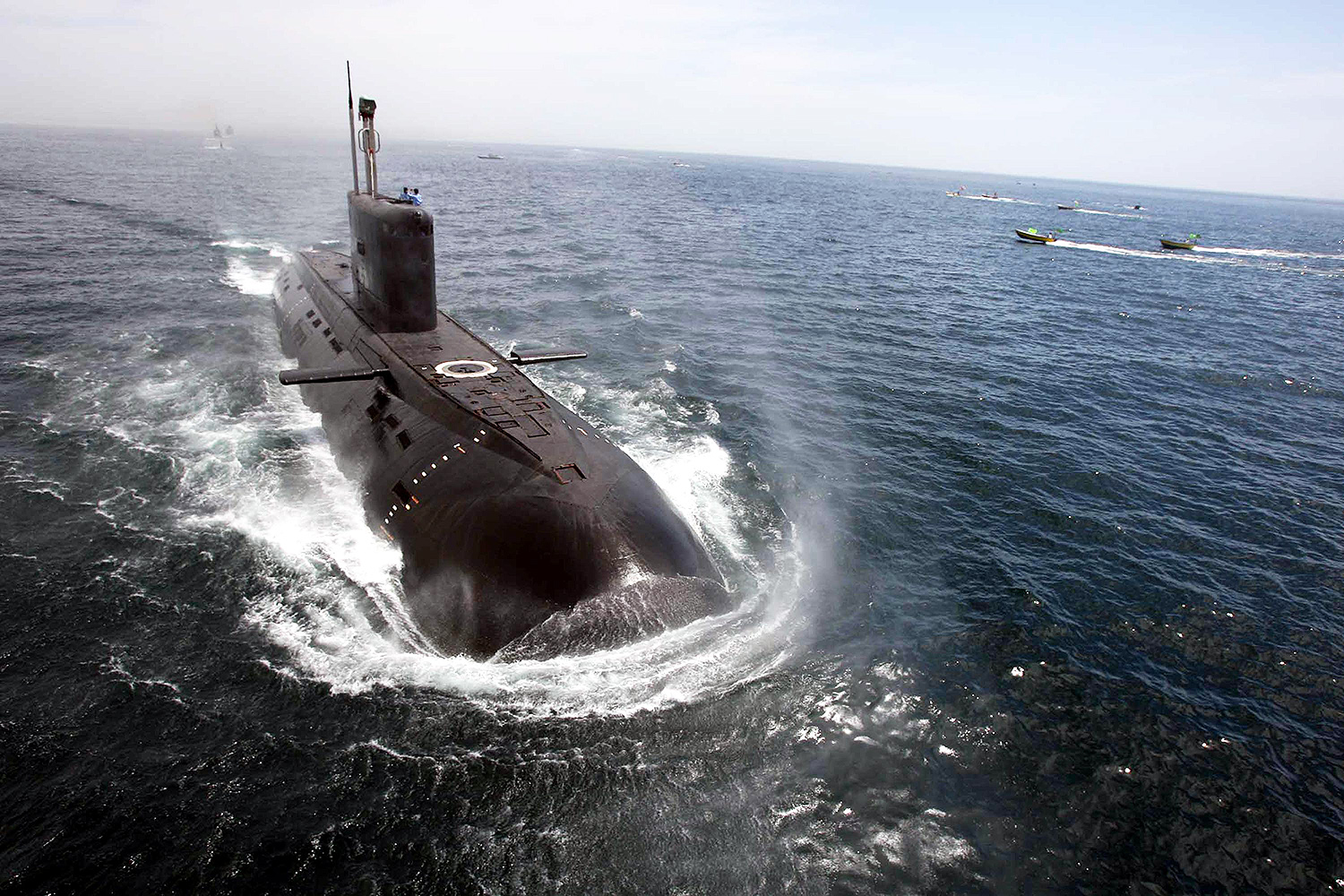
Did the P-8 partake in any interdiction missions to stop Iran from sending arms to Houthi rebels in Yemen?
Yes, as you saw in the article that I sent you, on one of the first missions in theater, one of our crews located and tracked a large dhow suspected of smuggling weapons to the Houthi rebels. Coordinating with the USS Sirocco, the crew stayed on station, resulting in the successful interdiction of hundreds of AK-47s, RPGs, and thousands of rounds of ammunition. This is also where the Triton is also extremely effective. Triton can stay on station significantly longer than the P-8, and is able to provide eyes on any vessels of interest until a P-8 or surface asset can arrive on station.

Iran’s threat against a P-8 flying near its borders made national news. Did you experience any tense moments while flying ISR centric missions near potential enemy borders?
There were definitely some more interesting moments while conducting Strait of Hormuz transits in accordance with international law and the United Nations Convention of Law of the Sea (UNCLOS). The majority of the time, the questions from foreign controllers were professional; however, there was the occasional query that was a little more challenging. Conducting yourself in accordance with international law and UNCLOS, and responding in a professional and courteous manner is the standard.
There is usually at least carrier strike group in the region, along with other US Navy and allied ships, not to mention many aircraft. How does the P-8 integrate with carrier strike group operations?
I know that the initial talk was that P-8 might be assigned to specific CSGs, however, as the platform has developed we are not assigned directly to a strike group. Most of the time, we are working in direct support of the strike group or an allied ship in theater. We can provide armed reconnaissance, escorts through congested waterways, full motion video, and help building the common operating picture (COP). We also often use HH-60Rs to help localize and track submarines as well, as their dipper is an effective localization and tracking sensor.
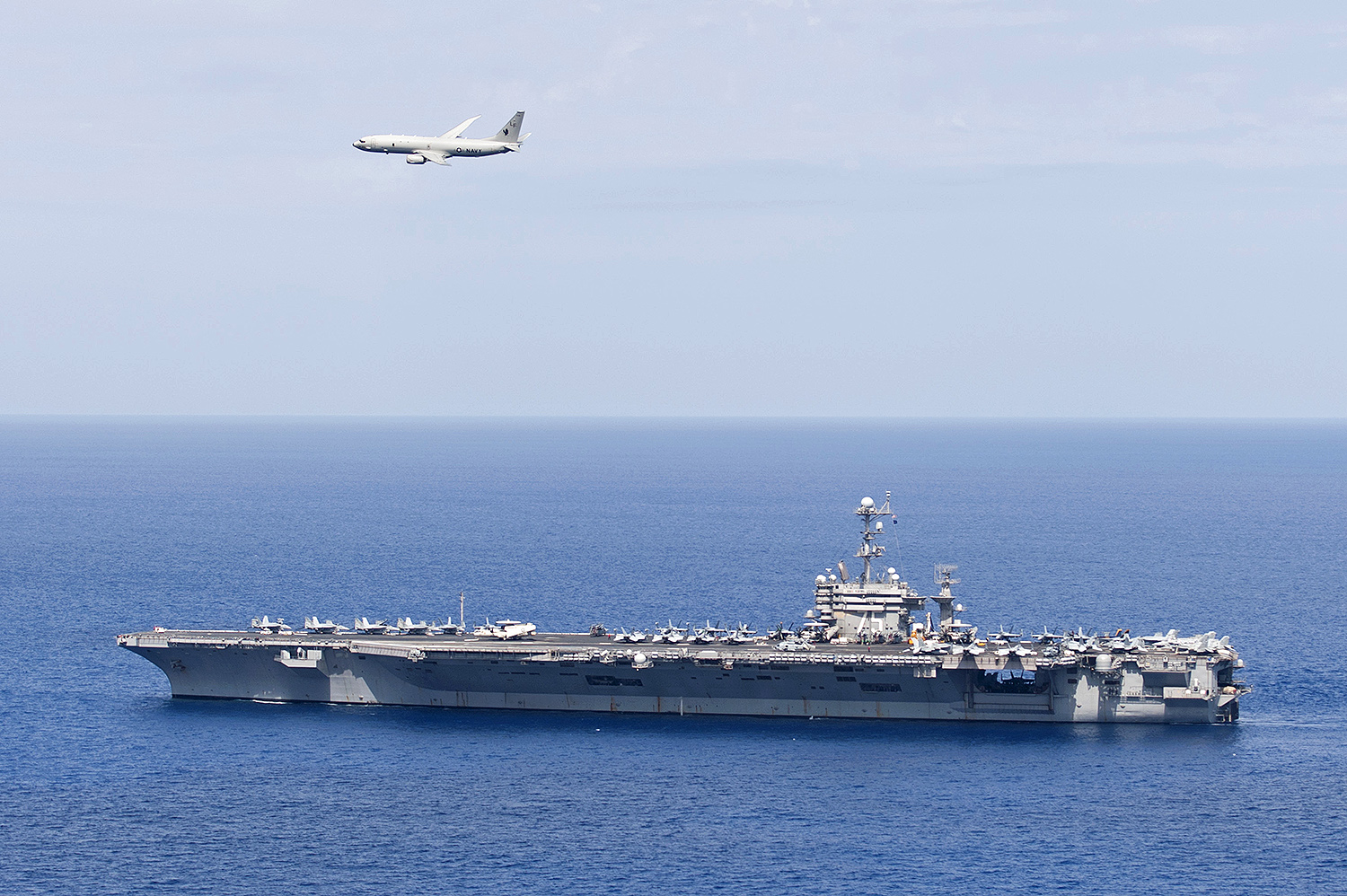
How will the P-8 work with the Navy’s new MQ-4C Triton version of the USAF’s Global Hawk?
Currently, the MQ-4C is being used as a long endurance, maritime ISR asset, that often times feeds us updated posits on contacts of interest. They can fly significantly higher and longer than us and are able to provide a more constant feed of ISR. The Triton will be flown and monitored out of NAS Jacksonville, and we have already seen some pilots and NFO’s being selected to operate the aircraft.
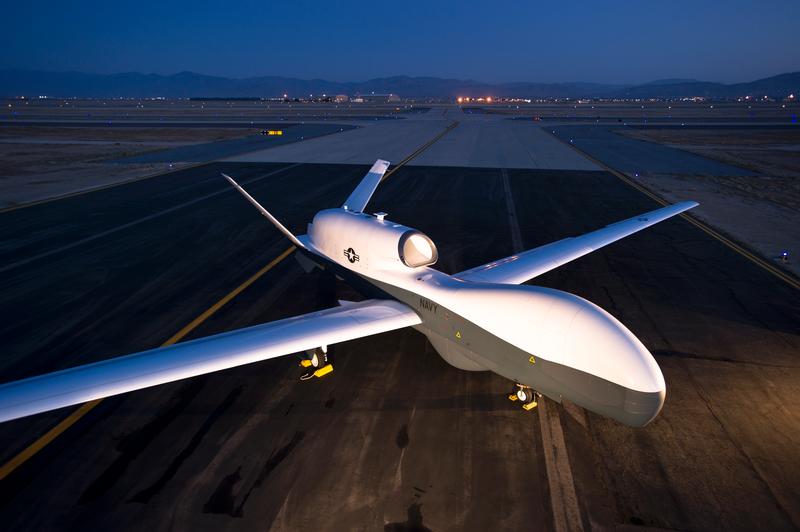
How did operating in the Middle East differ to the time you spent in the P-8 over in Asia?
The biggest difference between operating in the Middle East and 7th fleet, is the necessity for the immediacy of information. In the middle east, our capability for full motion video, and Link 16 uplinks are extremely important to the on the ground/sea commanders. Things happen in the middle east at a much more explosive pace than in 7th fleet AOR. Sending live updates with encrypted radios and communication is crucial because the information might be too dated to be important by the time we land. In 7th fleet, it is a long game. We are tracking more submarines and building a pattern of life for how other nations are acting. Even the slightest change in phrasing on a challenge from a foreign nation or added infrastructure in the South China Sea can be huge to updating how the political and military situation is changing.
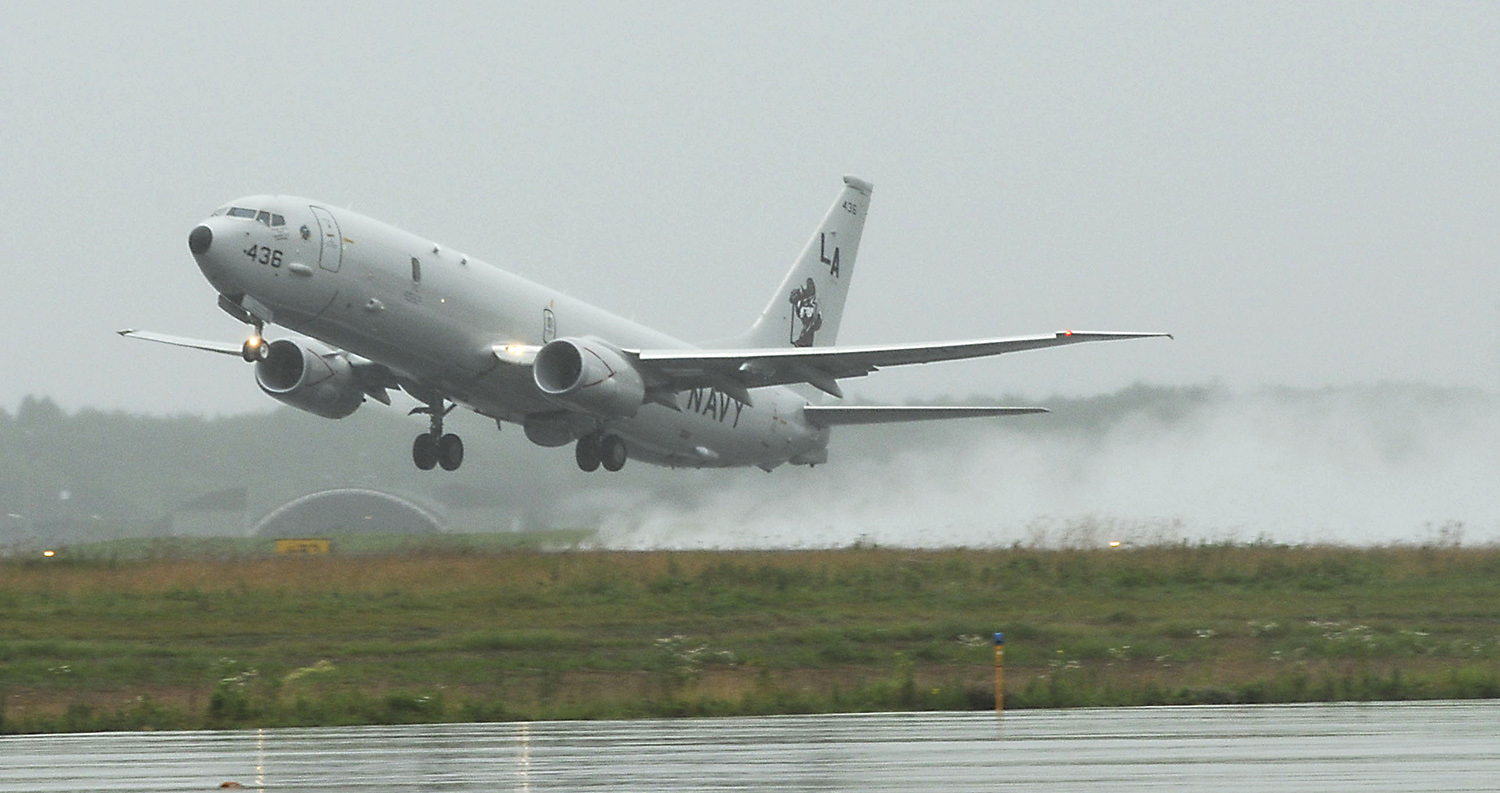
The big wigs in the Pentagon like to talk about “the tyranny of distance” when talking about operating in that area of the world, which can be very difficult to work around. Building and maintaining relationships was also a big sticking point from last deployment, so that we can work in conjunction with our allied partners and deploy from anywhere to provide ASW, ASuW, and ISR capabilities across thousands of miles. We had aircraft detached out of Misawa, Japan, Kadena, Singapore, Brunei, Thailand, Diego Garcia, and scores of other countries across both theaters.
China’s man-made islands in the South China Sea, and disputed territories off the coast of Japan are serious hotspots in the region, how was the P-8’s presence near and over these international hotspots important?
VP-5 has been pretty active in following the building of islands in the South China Sea. The entire first deployment was dedicated to following the buildup of these islands, with the second deployment, in conjunction with VP-8, we continued to see the increase in both AA/AD (anti-access/area denial) and airborne assets being deployed from these islands.

What weapons can the P-8 employ today and what are on the list for future integration?
Currently the P-8 can primarily employ the MK-54 torpedo and the AGM-84D Harpoon. The integration of the LRASM, HAAWC mod torpedo, and other niche weapons are also on the horizon. Given how new of a platform the P-8 is, we are still in the infancy of truly using the aircraft to its full potential. The P-8 Weapons School is now a completely separate squadron that is pushing forward the newest capabilities for the P-8 down the road.
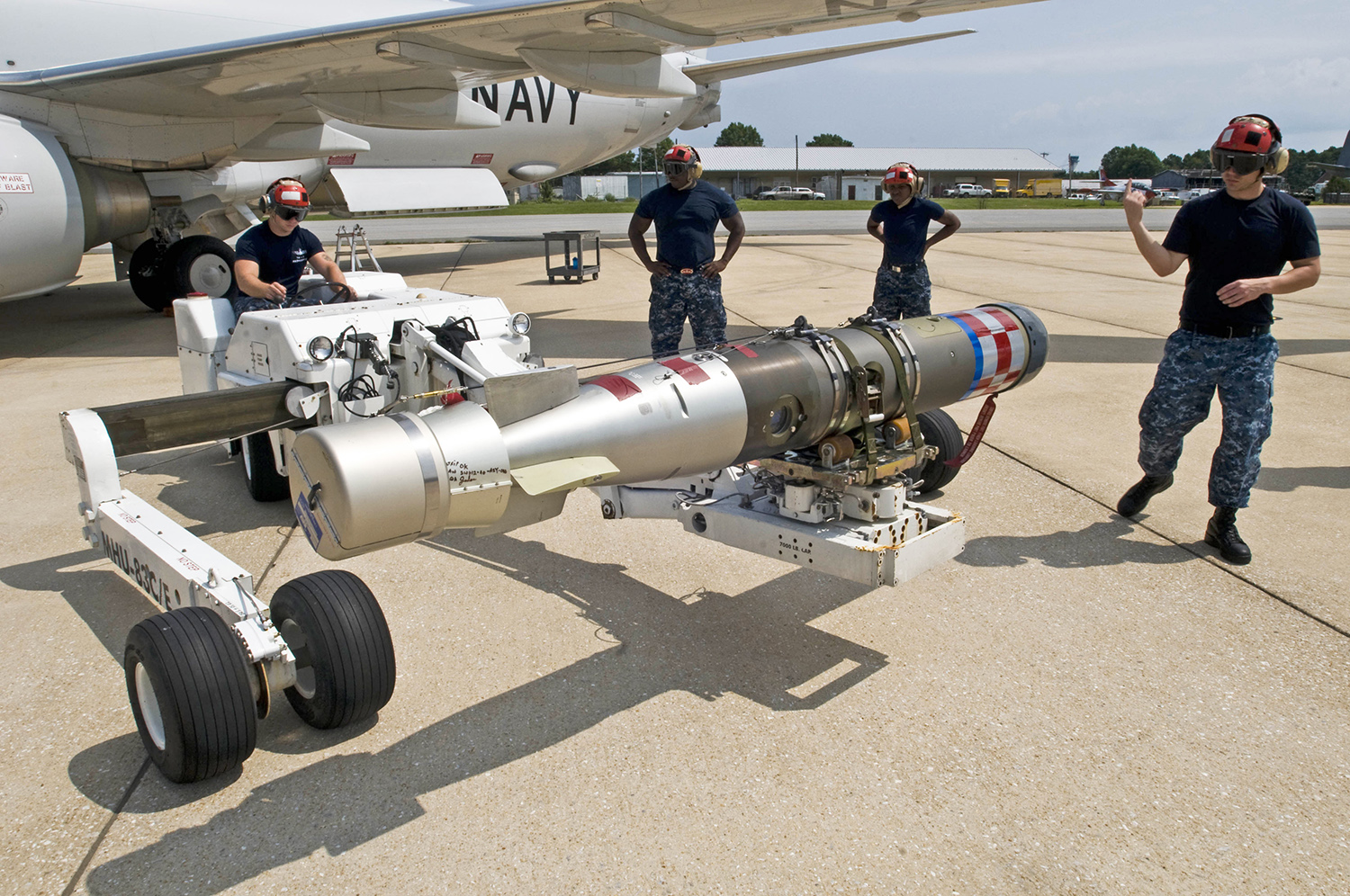
Torpedoes are going to be launched from our weapons bay stations, with the capability to carry up to five Mk-54 torpedoes. An ASW attack is currently carried out at a low altitude, with the capabilities for a high altitude ASW coming with the HAAWC kit for the MK-54.
For our primary ASuW weapon, we launch AGM-84D Harpoon missiles. The P-8 can carry up to four harpoons as well, and can shoot them in different modes and with both engine start before and after launches, from a wide variety of speeds and altitude regimes.
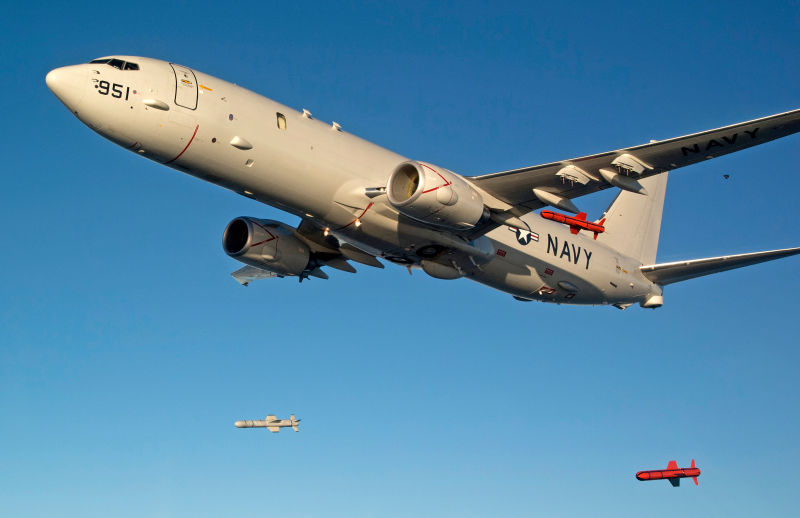
The P-8 is the best ASW localize/track platform in the fleet, one of the best maritime ISR assets in the world, with the ability to identify and track hundreds of contacts, and complete the kill chain for both surface and subsurface contacts if necessary. The training wheels of the P-8 are only just starting to come off, and with the development of aerial refueling, AAS pod, Triton, and the Block 2 Harpoon, the P-8 is quickly becoming one of the most complete/multi mission aircraft in the US military.
There seems to be two different forms of thought within the maritime patrol community as to how the P-8 and its mission set will evolve. One points to a much broader set of missions, where P-8s may even support ground troops, or provide overland armed reconnaissance, or even work as an arsenal ship along with other functions. The French are doing some of this with their old Atlantique IIs today, kinetic missions included. On the other hand, more traditionalists in the maritime patrol community want to keep the aircraft locked more strictly in traditional ASW, ASuW, sea control and surveillance roles. How do you think the P-8 and its crews will evolve in the coming years?
This is purely my own opinion, but what we have seen from the fleet and combatant commanders, is that they want to keep the P-8 a maritime ISR and submarine tracking platform. The aircraft is optimized for this mission set, but it is being expanded with future capabilities like AAS. I believe that you will start to eventually see an evolution of the P-8 over time, in that as the P-3 and EP-3 begin to be phased out, the P-8 will slowly pick up those mission sets. I do not think it will ever become a true overland weapons truck asset; however, the plane definitely has the capability to accomplish these mission sets if the need arises.
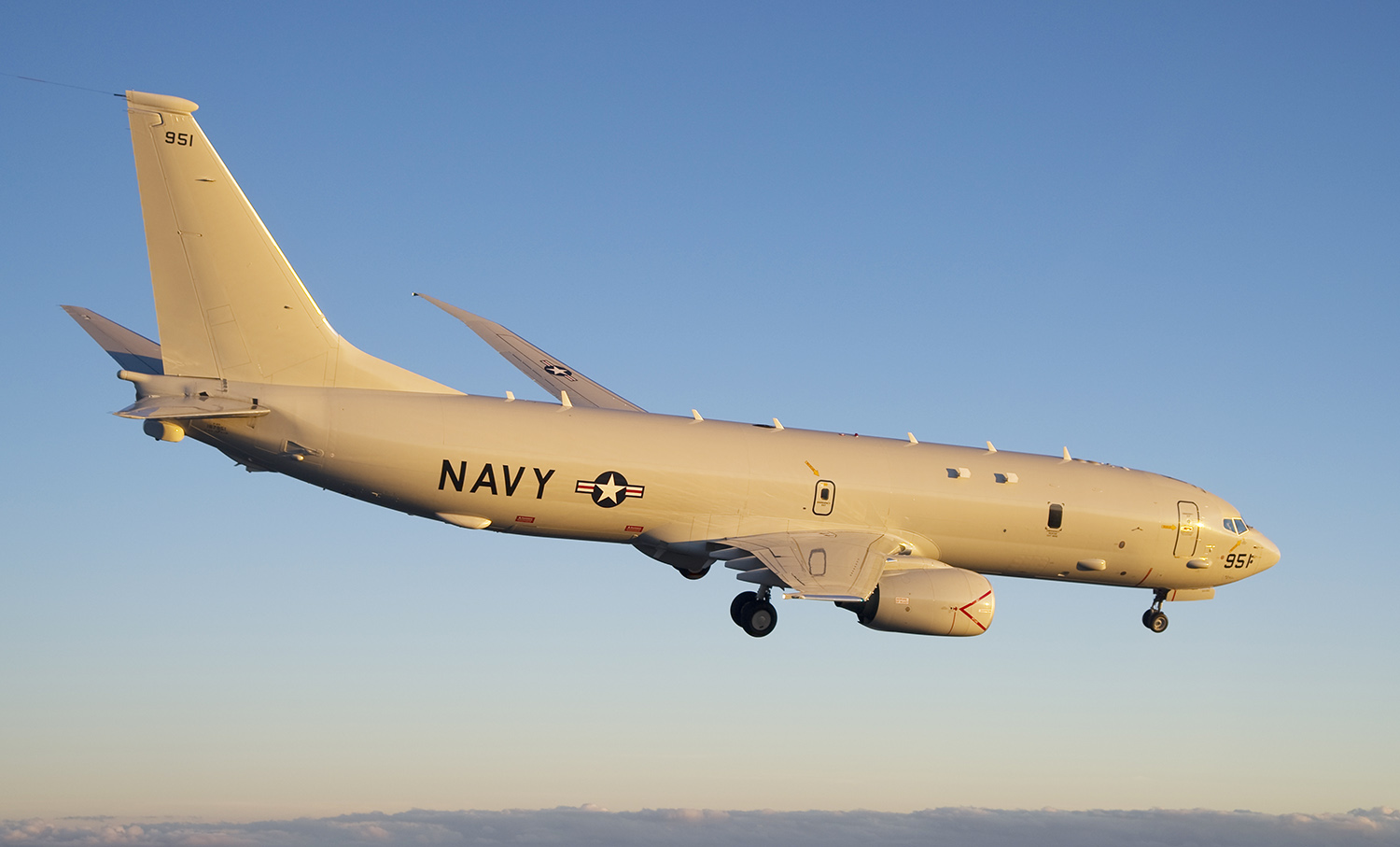
If you could have three things added to the P-8 and/or its weapons menu what would it be?
Polled some of the guys in the squadron on this—Block 2 Harpoon will be a nice addition, but the addition of LSRASM is definitely something we are looking forward too, along with a search and rescue kit that can be dropped through the weapons bay for when we are tasked with that mission.
Can you tell us about a few missions or memories that you have had in the jet that really stand out as unique, exciting or personally special?
From a mission standpoint, it is often the ready launches or last minute tasking that always results in the most exciting days in the aircraft. One flight we were re-tasked to rig a foreign submarine, coming down to a few hundred feet and 300 knots. Seeing the submariners on the bridge while we flew by was a pretty humbling experience. Often times we are operating tens of miles away from our targets, looking through a camera lens. However, flying by and seeing that they’re just the same as your crew, some mid 20 year olds cruising around the world in your government’s couple hundred million dollar asset is a pretty funny realization.
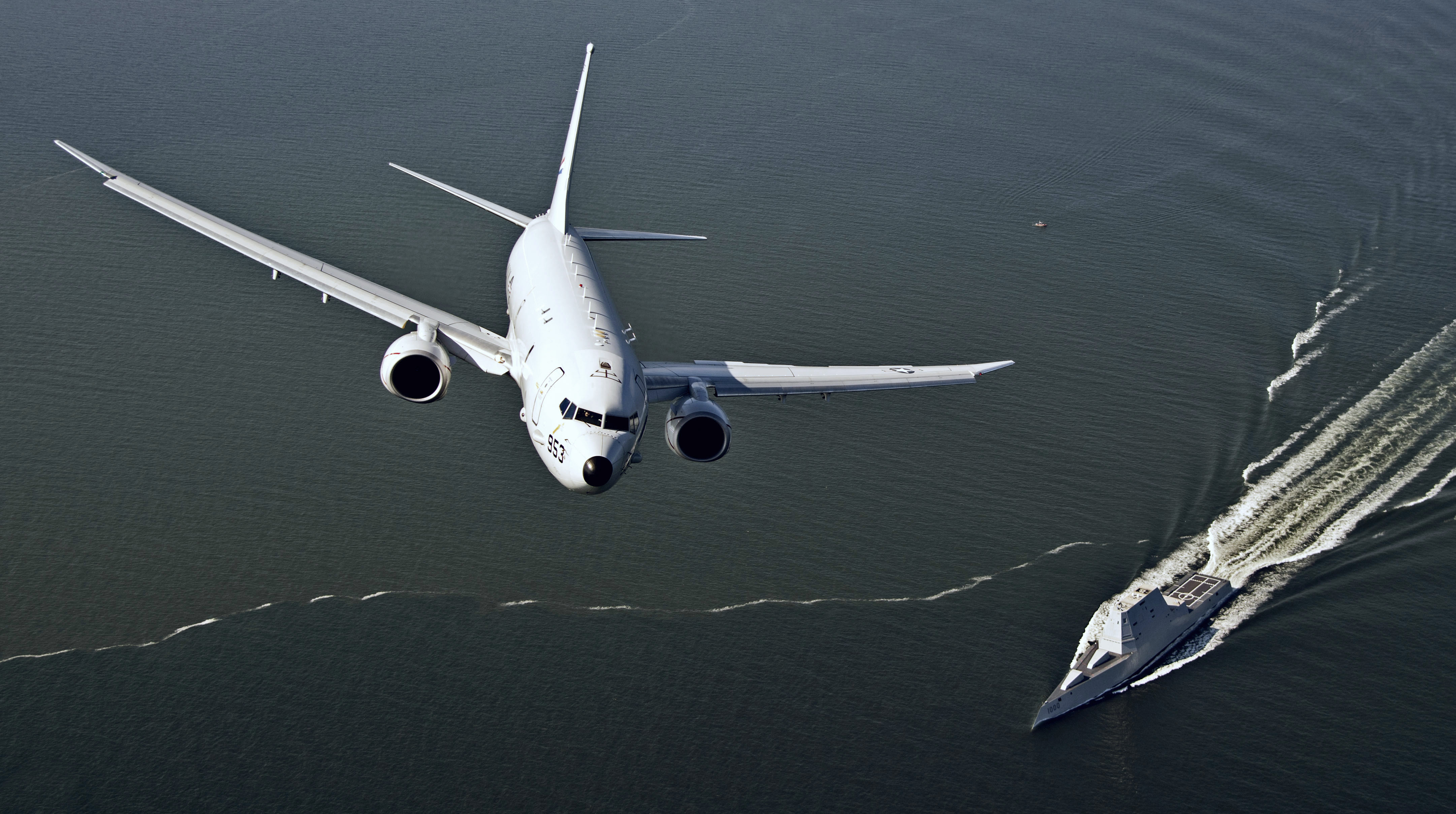
Lastly one of my personal favorites was flying into different airfields around the AOR that hadn’t been visited by a US maritime asset since my dad flew into them in a EP-3 in the 1980s. He has just a couple more hours than I do (about 16,000 more) and referring to him for some guidance before a flight was a pretty cool changing of the guard experience for both of us.

A huge thanks to all the folks at VP-5 who made this interview possible.
Contact the author: Tyler@thedrive.com
